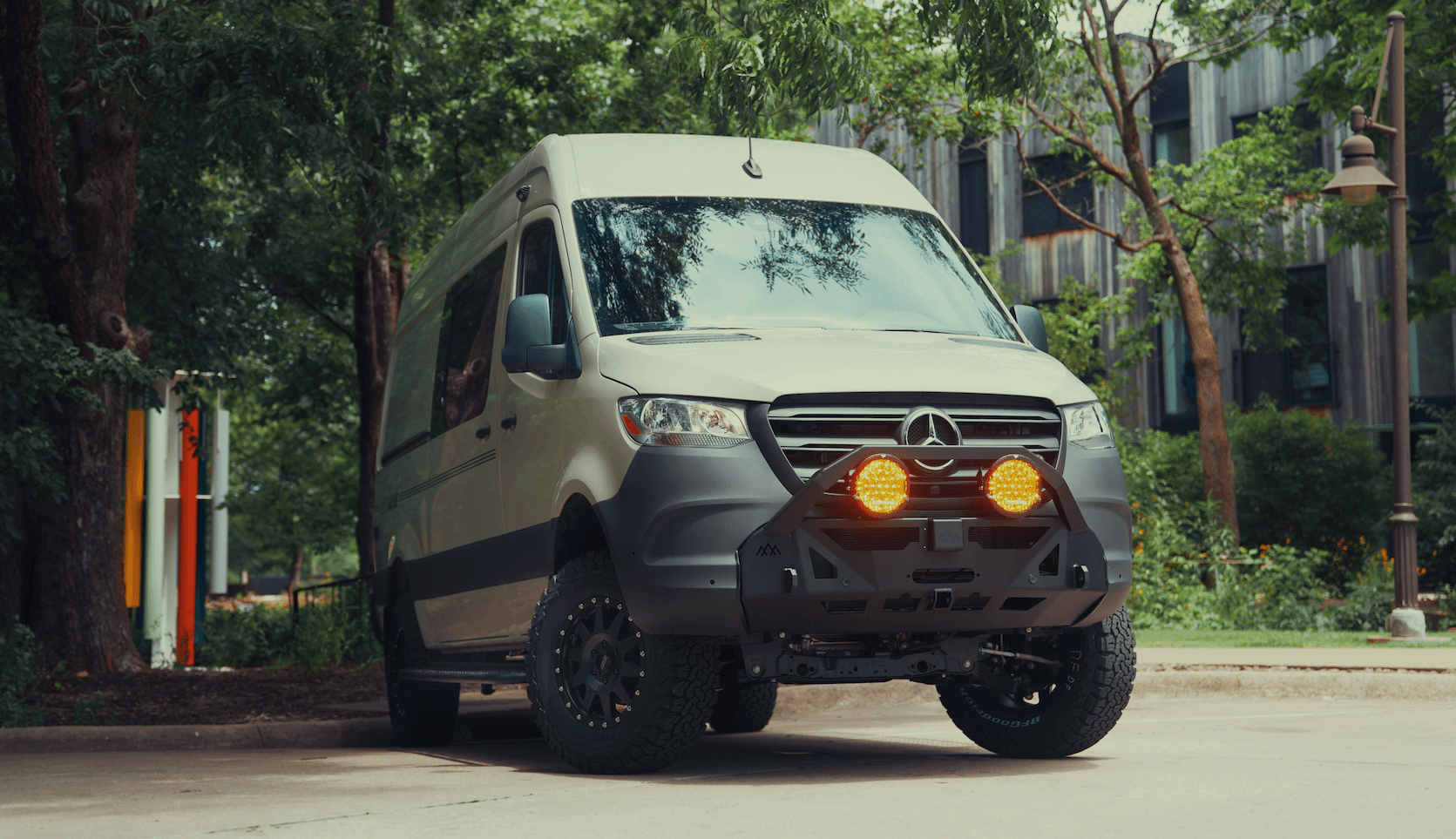Recreational Vans

A portable solar panel is a movable photovoltaic module designed for field use. Compared to fixed roof modules, it lets you park in the shade and place the array in full sun. The tradeoff is that you must deploy, orient, and stow it each day, and you need a safe way to carry it. Portables come as rigid suitcase panels with kickstands, foldable fabric blankets, or thin flexible sheets that roll or bend.
Monocrystalline cells tend to deliver higher efficiency per square foot and better low light performance than polycrystalline cells. Thin film is lighter and tolerant of heat but requires more surface area for the same output. Look for durable laminates, reinforced hinges, abrasion resistant fabrics, and connectors rated for outdoor duty.
Every portable panel must pair with a charge controller, ideally MPPT. MPPT tracks the panel’s voltage current sweet spot for more harvest in cold or variable conditions. PWM is simpler but wastes available voltage. Many portable kits include a small controller on the panel itself, which is convenient for 12 volt batteries sitting nearby. For vehicle systems with lithium storage, placing a quality MPPT close to the battery reduces voltage drop and improves accuracy.
Begin with an energy budget. List each device, its watts, and hours used. Multiply to get watt hours per day, then add a buffer for inefficiencies. A typical 12 volt compressor fridge might average 40 amp hours per day, about 480 watt hours. Add phones, lights, fans, laptops, and a small water pump and you might land near 700 to 900 watt hours daily.
Convert daily demand to required array size using peak sun hours in your region. If you need 800 watt hours and expect 4.5 peak sun hours, you need roughly 180 watts at the panel under perfect conditions. Real world losses from temperature, wiring, angle, and dust can be 25 to 40 percent, so a 240 to 300 watt portable array is a safer target for that load.
Understand temperature and angle. Panels are rated at lab conditions around 25 degrees Celsius. In hot summer sun, voltage droops and output falls. A tiltable stand that aims the panel perpendicular to the sun recovers significant power, especially mornings and afternoons. Cleaning dust and pollen helps too.
Plan wiring. Long leads create voltage drop, cutting charge rates. Use appropriate gauge cable, weather resistant connectors such as MC4 or Anderson, and keep the MPPT close to the battery when possible. Fuse positive leads near the battery and consider a quick disconnect for fast pack up. For multi panel setups, series wiring raises voltage to help the controller work efficiently in cooler weather and longer cable runs, while parallel wiring keeps voltage low and maintains output under partial shading.
Daily use is about placement and protection. Put the panel in clear sun, away from foot traffic and vehicle movement. Secure the kickstand so wind does not flip the array. Avoid shading from roof racks, trees, or antennas, even a small shadow across a cell can slash output. If using a blanket, lay it flat and anchor the corners.
Mind battery chemistry. Lithium iron phosphate accepts higher charge currents and holds voltage more consistently than traditional lead acid, which makes MPPT a smart match. Program correct absorption and float settings in your controller. Monitor with a shunt based battery monitor for accurate state of charge.
Storage matters. Rigid suitcases need padded sleeves and a dedicated tie down spot. Blankets should dry before packing to prevent mildew. Keep connectors capped to block dust and oxidation. Inspect cables for nicks, tighten strain reliefs, and check the stand bolts periodically.
Think about use cases. Weekend trips might do well with a single 100 to 200 watt panel to top a small battery. Remote workdays with a fridge, fans, and a laptop could require 300 to 400 watts plus a robust lithium bank. Winter camping needs more wattage due to lower sun angles and shorter days. In the desert, heat favors a larger array to offset thermal losses.
A mixed system gives flexibility. A modest roof array covers driving and quick stops, while a portable fills the gap at shady camps. Tie both into an MPPT sized for total current, or use separate controllers feeding the same battery with proper protection.
If you want quiet energy with less generator time, a portable panel paired with the right lithium bank and MPPT is a smart foundation. When you are building or upgrading a travel rig, clean integration matters more than raw wattage. Battery placement, cable routing, thermal management, and safe disconnects determine whether your system is dependable on day fifty as well as day one. That is the level of detail a professional shop brings to off grid power.
Our team designs vehicle power systems around your actual use pattern, from daily energy modeling to controller selection and tidy installation. Whether you prefer a portable blanket you can chase the sun with or a hybrid setup mixing portable and roof modules, the goal is simple energy that just works while you roam.
Explore recreational vans
Custom build van
Explore mainstream vans
Tell us what you power on the road. We will map your energy needs, specify the right portable solar panel setup with MPPT charging and a matched lithium bank, then install it with clean wiring and clear handoff training. Submit the form and let OZK Customs build your dependable off grid system.
Ready to power your adventures with a dialed solar system? Tell us how you travel and what you run. Our team will blueprint the right lithium bank, MPPT charging, and portable or roof array, then build it clean and reliable. Start your custom power plan now.
ADDRESS:
6159 E Huntsville Rd, Fayetteville, AR 72701
PHONE:
(479) 326-9200
EMAIL:
info@ozkvans.com